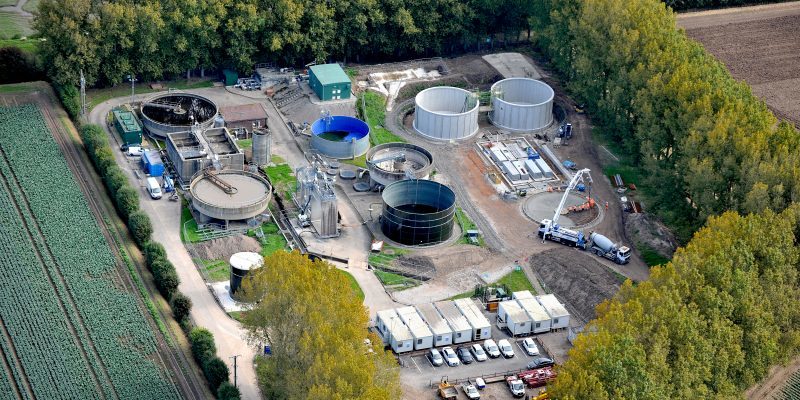Value £4.5m
AMP6 Hesketh Bank Wastewater Treatment Works
Client: United Utilities
Completion: June 2017

Hesketh Bank Wastewater Treatment Works (WwTW) were awarded this project to contribute to the improvement of bathing waters and to achieve compliance and improve shellfish water quality. This will be met by delivering a spill frequency of no more than three spills per bathing season, or 10 spills per year from the Hesketh WwTW Storm Tanks.
The technical stuff:
To achieve this, the project constructed
- One new primary settlement tank 13.5m diameter
- One new double lane activated sludge aeration plant
- Two new 12.8m diameter final settlement tanks, (all of which are pre-cast units)
- A new UV plant installation and redevelopment of the existing aeration and final tanks into additional storm storage
- New inlet screens
- A new Motor Control Centre and associated feed pipework was also being constructed as part of the works
All the new structures were fitted out with new mechanical and electrical equipment to enable the process of treating the effluent to be effective and meet the drivers for the project.
The new activated sludge plant process was also implemented for the first time in the UK.
DfMA:
Design for Manufacture and Assembly (DfMA) was extensively utilised on this project where C2V+ constructed two new 12.5m diameter 6m deep final settlement tanks, one new 13.3m diameter and 6m deep primary tank and a new aeration tank which is 18.125m long 9.5m wide and 6m deep.
Also fabricated off-site, was a glass coated sludge tank 5.5m diameter and 7.5m deep and a glass coated steel pumping station 3.4m diameter 7.1m high.
All these tanks were constructed above ground and the off-site. DfMA has resulted in less work at a height and the quality of the constructed elements is of a very high standard. DfMA was also a benefit in the programme due to the ability to plan the sequencing of the structures and made the works less vulnerable to weather events.
